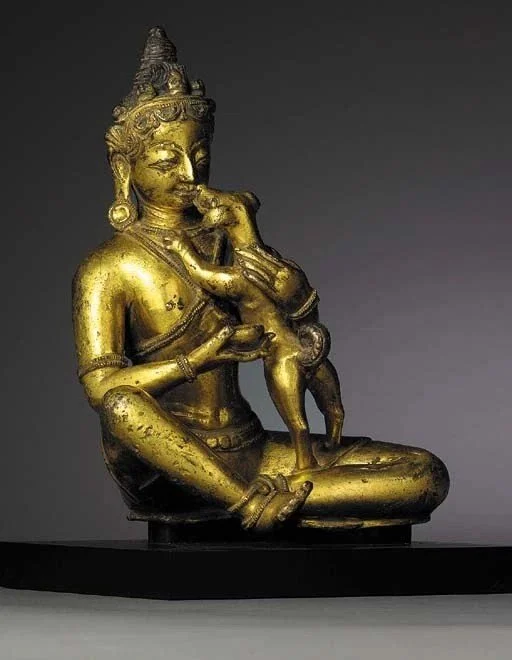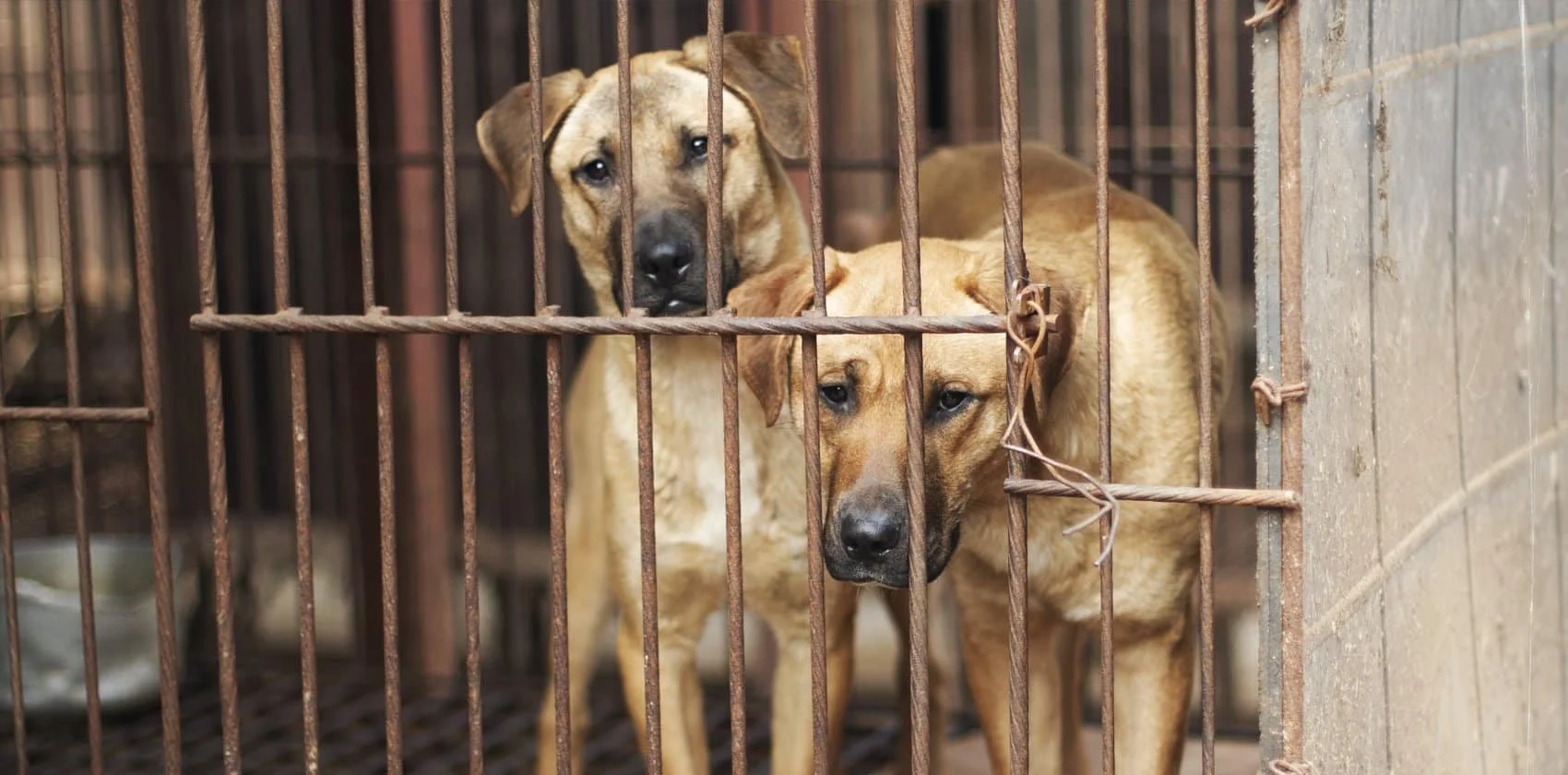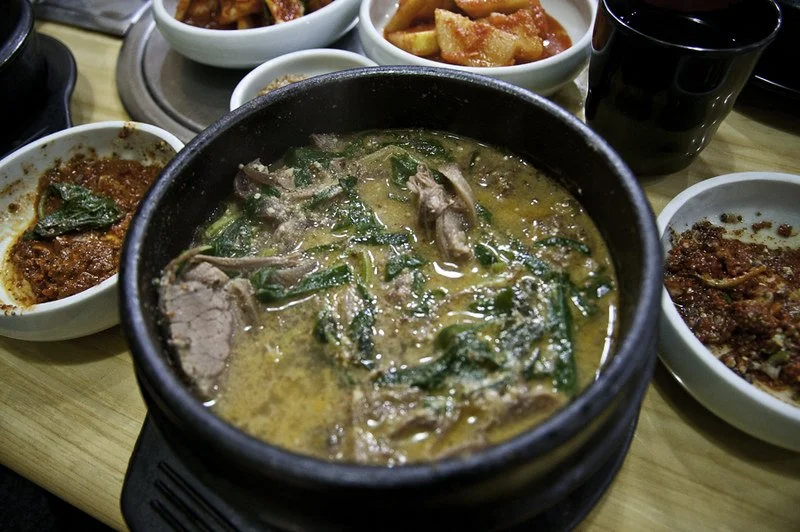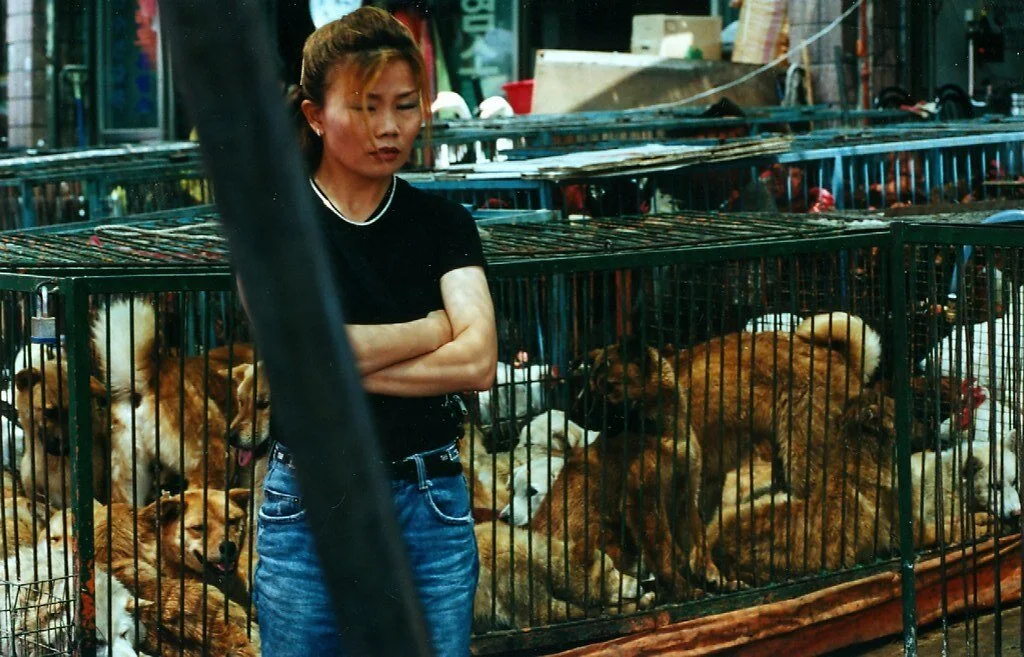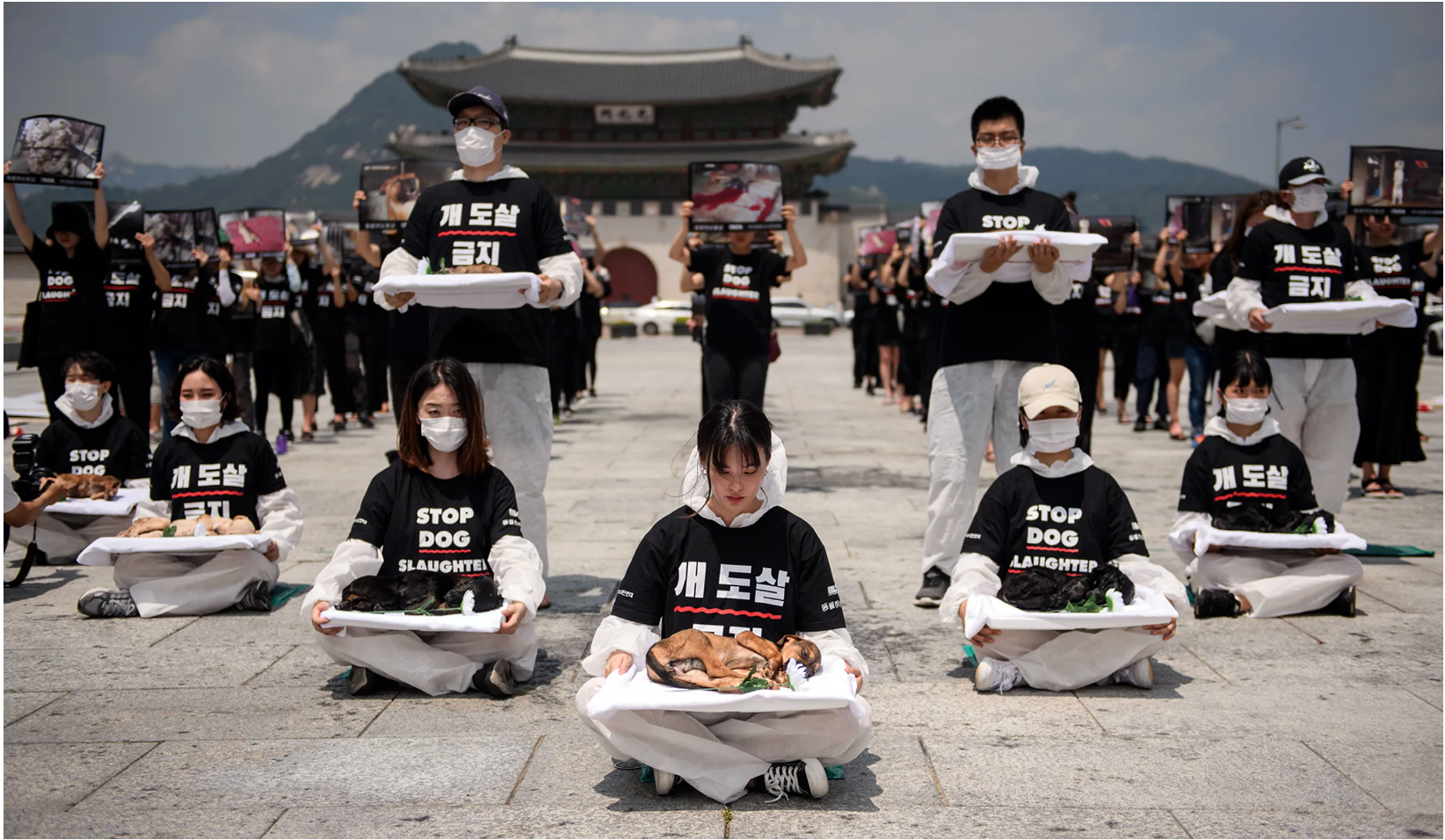Dogs: Food or Friends?
For years, dog-eating has led to global protests, legal action, prejudice, and extensive media coverage. Due to their history of eating dogs, many Asian ethnic groups such as Chinese, Korean, and Vietnamese have been targeted by this ongoing controversy. However, behind the eye-catching news articles and criticisms on the subject, there exist many complex layers to the issue that many people may be unaware of. So, this blog aims to explore the many components, specifically in South Korea, that make up the past and current situation, domestic and international attitudes, and misconceptions surrounding the controversial practice.
WHAT CAUSED THE INCREASE IN DOG CONSUMPTION IN KOREA?
Archaeological evidence suggests that dog consumption started in the East Asian area in the Neolithic period (~9500 BCE-3000 BCE). Though, the practice wouldn’t become more widespread in the Korean peninsula until thousands of years later.
Statue of Mahasiddha Kukkuripa, known for his loving loyalty towards his dog
From the Silla Dynasty (57 BCE - 935 CE) to the early half of the Goryeo dynasty (918 CE - 1392 CE), the prominence of Buddhism influenced many people to refrain from harming other living creatures, including dogs. However, in the later half of the Goryeo dynasty, the fall of the nearby Liao Dynasty/Khitan Empire caused some Khitans to flee to the Korean peninsula. In the process, they brought over their customs, one such custom being the preparation of dog meat. As the Goryeo dynasty eventually fell and the new Joseon dynasty (1392-1910) developed, most people of Khitan descent were assigned to the new, low-ranking butcher class, Baekjeon, which often dealt with dog meat preparation due to the animal’s abundance. While some Joseon government officials argued against this treatment of dogs, more and more people began seeing dog meat as some type of delicacy, causing the stigma around the meat type to lessen.
Another surge in dog-eating occurred post World War II. After decades of Japanese occupation left Korea in an extremely poor and volatile state, some Koreans resorted to dog meat as sustenance especially considering the rarity of cattle at the time. In South Korea, even as living conditions improved, dog consumption had become intertwined with their culture over time to the point that eating the meat received little opposition. For example, during Boknal (a tradition in which 3 summer days are chosen as the hottest by the lunar calendar), Koreans typically ate bosintang. According to legend, this dog meat soup supposedly gives energy and strength to the consumer which will allow them to persist through the hot and humid weather. Some dog meat industry workers took this belief further by torturing the dogs right before death to release adrenaline, an action they believed would enhance the healing properties of the meat. Though, as more time passed, South Korea began to experience a change in opinion on the issue.
A SHIFT IN SOUTH KOREAN OPINION
As South Korea experienced more exposure to Western culture, the idea of dogs as companions became more popular. However, these changing views of dogs did not really take off until the South Korean 1988 Summer Olympics. This was South Korea’s chance to boost their standing among the international community, so when Koreans received worldwide backlash for their acceptance of dog meat consumption, the government worked to adjust certain policies to appease foreigners for the time being. Yet the government’s actions caused another group of protests: people involved in the dog meat industry, from the consumers to the traders, argued that the international protests reflected cultural imperialism. To many Koreans, dog meat was just a common, staple meat similar to beef and chicken in other countries. They were puzzled when foreigners criticized the inhumane conditions of dog farms despite similar conditions existing in meat processing facilities within their own countries. Arguments such as these persisted throughout the years to come, leading to much back and forth on the issue.
Although the government only loosely enforced the dog meat restriction policies during the Olympics, the intensity of international backlash led to more policy change. In 1991, the government issued the Animal Protection Law which aimed to stop cruel, irrational slaughter of non-livestock, dogs included. While hard to enforce entirely, this law was one of the first to pave the path for more change in the future.
One of the many stall at the Moran Market which featured dogs crammed into cages
British-American freestyle skier Gus Kenworthy visits a Korean dog farm during the 2018 Olympics
The dog-eating debate received another major spike in attention when the nation hosted the 2018 Winter Olympics in the city PyeongChang. In order to avoid a repeat of the 1988 Olympics backlash, the government worked to suppress the dog industry. Near Seoul, a dog meat farm was shut down in late 2017. In 2018, federal and local efforts were made to shut down dog meat operations in the Moran market, a market south of Seoul where before, it was not uncommon to see dogs crammed into dogs and slaughtered on site. In the PyeongChang area, the government offered restaurants 2 million Won (~1,850 USD) in order to take dog meat off their menus. However, only a mere handful of restaurants took the deal, and once those restaurant owners saw their sales go down, they soon reintroduced dog meat to their menu again. With the Korean dog meat industry still receiving international backlash despite all these efforts, the government alongside animal activist groups furthered their attempts to stop the practice. For example, the cat and dog department of Animals Asia continued the investigation surrounding the notorious Moran market. On July 17, 2018, activists from the groups Animal Liberation Wave and Last Chance for Animals gathered in Seoul’s Gwanghwamun Plaza. In protest, they wore shirts that said “STOP DOG SLAUGHTER”, held photos depicting the cruel conditions of dog farms, and carried dog corpses found in dog farms. Later that year, animal activists received a big victory when Taepyeong, one of the largest dog killing operation chains, closed down. Following this success, the Humane Society International reported in February 2019 that in their past four years of effort, they had closed down 14 dog farms. Despite all these changes though, many misconceptions still exist about the situation of dog meat in South Korea.
Dog slaughter protest in July 2018 at Seoul’s Gwanghwamun Plaza. Protestors found corpses of dogs from farms and laid them with a white flower, representing the undeserved loss of innocent lives.
TODAY’S SITUATION: PUBLIC OPINION AND THE CHANGING DOG INDUSTRY
Protestors objecting to the dog meat festival in Yulin, China
The most obvious misconception is the belief that Koreans and other Asian ethnic groups still consume dogs at large. Around the late 90s and early 2000s, a survey found that ~80% of the Korean public still generally accepted dog meat. In 2022, a survey found that 87.5% of Korean respondents had never eaten or do not plan to eat dog meat in the future. More than half of Koreans in their 20s who had previously eaten dog meat explained that they did so under pressure from seniors. Other surrounding Asian countries are experiencing a similar decline in dog meat popularity as well.
When people think of countries that allow dog meat consumption, it is not uncommon for them to only think of Asian countries. However, this leads to another misconception: only Asian countries approve of dog-eating. In fact, 44 U.S. states still regarded the killing of dogs and cats for meat as legal until President Trump signed the Dog and Cat Meat Prohibition Act in 2018. Additionally, in Switzerland, thousands of people eat dog and cat meat as a Christmas season tradition. Though, like in South Korea, animal activists are working to stop this practice.
On the other side, many people falsely believe that dog meat has pretty much vanished from the diets of Koreans. In the past few years, ~700,000-1,000,000 dogs have been slaughtered for consumption. While the government and activist groups have worked to shut down more of the dog industry, people have found ways to work around the increasing restrictions. For example, many restaurants still sell the dog soup bosintang but advertise it more discreetly and under different names such as yeongyangtang, or “nutritious soup”.
CLOSING THOUGHTS
Due to the long history of dog-eating in Korean society, it is only natural that arguments regarding the industry continue to arise and develop. As the debate continues, one of the best ways to understand every angle is through research, research that goes beyond the flashy news headlines and quick-to-judge misconceptions in order to uncover the many complexities surrounding the topic.
CITATIONS
“Dog Meat's Controversial History, From the Ancients to the Winter Olympics”
“Young Koreans feel pressured to eat dog meat by their elders despite concerns about animal cruelty and hygiene, new survey finds”
“Olympic crackdown on dog meat fails to banish it from menus”
https://www.nbcnews.com/news/world/olympic-crackdown-dog-meat-fails-banish-it-menus-n847091
“South Koreans eat more than 1 million dogs each year — but that's slowly changing. Here's why.”
“Boknal: Korea’s Notorious Dog Meat Tradition”
https://www.freekoreandogs.org/boknal-koreas-notorious-dog-meat-tradition/
“Dog meat in South Korea: Has infamous Moran Market really closed?”
“Kukkuripa, the Dog Lover”
https://tricycle.org/magazine/kukkuripa-dog-lover/
“Not Just for Christmas: Swiss Urged to Stop Eating Cats and Dogs”
https://www.newsweek.com/not-just-christmas-swiss-urged-stop-eating-cats-and-dogs-287378


